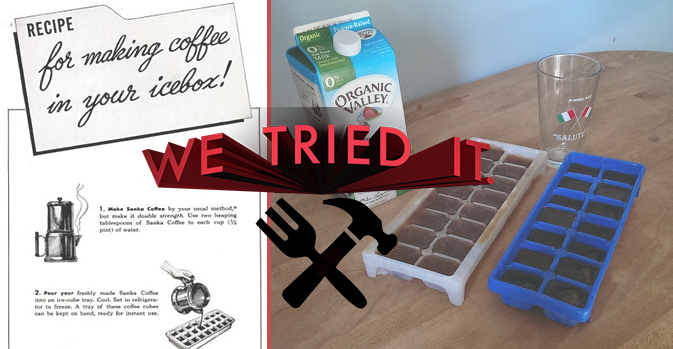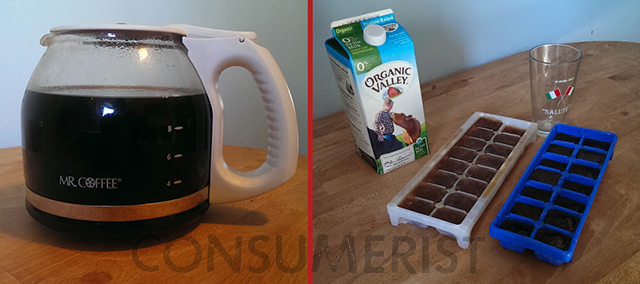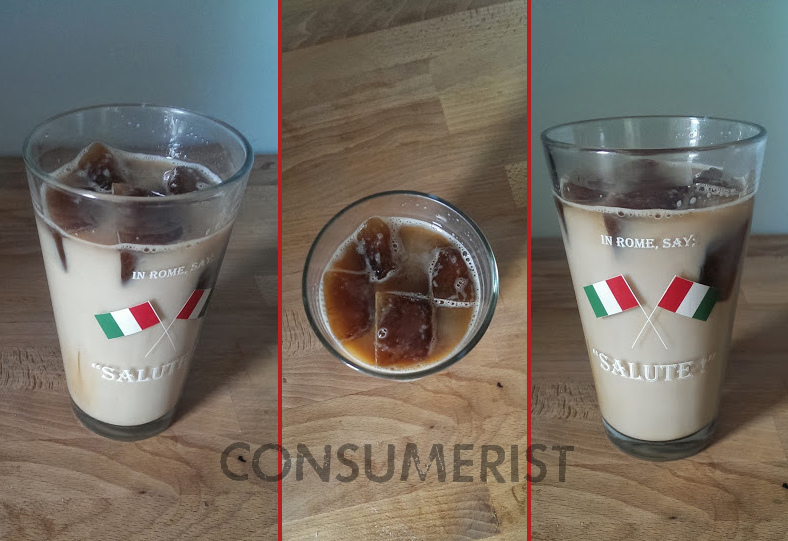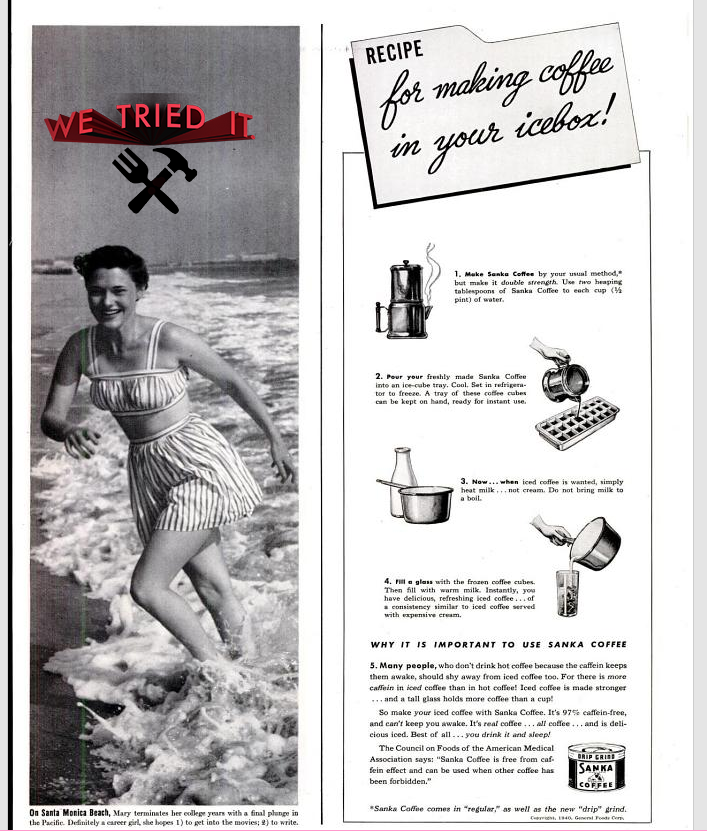We Tried It: “Making Coffee In Your Icebox” Is A Milky Proposition
 There are innumerable bits of information floating out there on the Internet, some useful, some not so much. How do you sort through the flotsam and jetsam, and separate the detritus from the worthy nuggets? That’s where We Tried It comes in, a new series from Consumerist. It’s when that link your friend posted about that thing stops being a link, and starts getting real*.
There are innumerable bits of information floating out there on the Internet, some useful, some not so much. How do you sort through the flotsam and jetsam, and separate the detritus from the worthy nuggets? That’s where We Tried It comes in, a new series from Consumerist. It’s when that link your friend posted about that thing stops being a link, and starts getting real*.
THE CHALLENGE
In this week’s edition of We Tried It, the link in question involves a Sanka ad from 1940 about “making coffee in your icebox” and was submitted by my enterprising colleague, Boss Meg “Why Do You Always Call Me Boss Meg?” Marco:
THE INGREDIENTS

For this effort, I decided to use my oldest, cracked ice cube trays because they look so good in pictures.
I used skim milk because that’s how I’m used to my coffee tasting. I’m sure there’s a similarity between hot and cold versions of your preferred milk, though the ad warns not to use cream. Because I listen to instructions, I didn’t even try it with cream because I’m also not a glutton for punishment.
As for the coffee — no, I didn’t make a pot of Sanka, I used what I had in my pantry. But only because the ad’s reason for using it is to to sell Sanka, obviously, and the only “reason” given to prefer it over others is because it has less “caffein”:
So make your iced coffee with Sanka Coffee. It’s 97% caffein-free, and can’t keep you awake. It’s real coffee… all coffee… and is delicious iced. Best of all… you drink it and sleep!
THE PROCESS
I let the ice cubes chill out in the freezer, instead of my 1940s ice box, for a few days only because I was waiting for a sunny day that took forever to arrive. Iced coffee is best when it’s nice out, right?
Removing them from the tray was a bit of a messy hassle, so be warned that you’ll probably end up with brown fingers by the end. As you can see, 10 cups of extra-strong coffee made about two dozen cubes. I made an extra glass in cased I mucked things up somehow.
I heated the milk on the stove in a pan for about five minutes, until it was hot but not boiling. I figured you don’t need a photo of that, because you can probably imagine it for yourself. I’ve got one if you’ve got a need to see it. Then, I poured it into the glass…
THE RESULTS

So the thing is, I was completely expecting to be grossed out, turned off and otherwise hate this. There’s something about hot milk by itself that just… yurgh. But because I like strong iced coffee, I also like a good amount of milk, which this certainly has. And it did look gross — brown cubes are inherently unattractive, after all.
And because the cubes take a while to melt, even in warm liquid, you’ll have a decidedly milk-heavy ratio going on for a little bit, which some might not like.
THE VERDICT: IT’S NOT TOTALLY NASTY — Go for it, if you want.
I liked it, enough that I drank the whole thing and another one while writing up this post later. But the real question is — is this any more convenient than just making hot coffee and putting in regular iced cubes, then adding cold milk? Or heck, use coffee ice cubes and then put those in your coffee for a real kick, and to keep the coffee from getting watered down.
You’re bound to have equal access to either hot milk or hot coffee, as well as your chosen liquid in cube form. So if you don’t feel like heating anything up, just prepare a pot beforehand, stick it in a pitcher in your fridge and pop in whatever cube you want.
My suggestion? Make a pot of hot coffee, keep it in a pitcher, add regular ice cubes. Or coffee ice cube in hot coffee. Or COLD coffee. the sky is the limit!
Found a kitchen or DIY experiment — old or new, it doesn’t matter — you want me to try? I’ve got my limits, but I’m open to suggestions. Send an email to tips@consumerist.com with the subject line WE TRIED IT.
*Totally intentional reference to The Real World. But only seasons 1 through maybe 15?
Follow MBQ on Twitter if you’ve got stuff you want her to try: @marybethquirk
Want more consumer news? Visit our parent organization, Consumer Reports, for the latest on scams, recalls, and other consumer issues.



